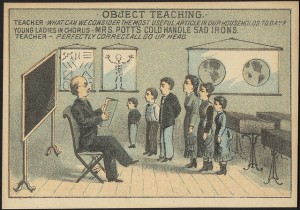
The old methodologies for grammar education rely on outdated and singular focuses, such as course books and summative assessment, in the form of quizzes and test. Rather than fascinate students they are likely to be disconnected and bored by decontextualized textbooks and worksheets (Curnow i). The limitations of a course book to involve modern situations that are apart of each ELL learner’s life, it acts as a safe haven for students, making it hard for them to go past the grammar outlined in the text (DelliCarpini 97). One issue with this is that grammar, like language is both growing and different from written to actual practice. It may equip students to write formal essays and perform well on tests, but does not help them in the “real world”, engage in active listening or use colloquialisms in informal environments. Thus, in a sense, the grammar of the course books alienates the ELL students. The same can be said about rote education, where when students were put in new situations, outside of the realm covered by their grammar repetition, students were unable to participate (DelliCarpini 98). Rote learners may be excellent in academics, but may perform weakly in a university or job interview, because they have only had to produce language to pass assessment in school (Ganesan 43).
Improving the enjoyment and practical application of the activities with grammar in an ELL class, improves the effectiveness of making the grammar acquisition more intrinsic. Students who learn from strict academia in an academic context are in a minority compared to experiential and auditory learners (McGrath 20). Thus grammar lesson cannot be strictly grammar lessons, but should include other components. Grammar lessons should not be simply to improve language accuracy and nitpicking student’s language usage, but should be a driving catalyst to promote the many uses of language and why it’s acquisition in valuable. In grammar lessons, teachers should discuss with students the purpose of the writing (to persuade, to hurt) and the style of the writing (formal, informal) (DelliCarpini 98). Lessons should include real life situations, as many of the students might not be aware of the cultural difference that exists. A simple lesson on elections, may inform student about the election process, which may not be native to them (Haynes 14). Rather than simply using a course book, the cultural, social, linguistic and academic resources should be seen valid educational resources. This means an employment of multimodal approaches that encompass focuses beyond grammar, such as building cognitive skills, different forms of writing and oral usage, and expanding pertinent, real life vocabulary (Jean 480). Multimodal approaches not only address practical grammar usage, but also engage different learners and different levels of proficiency and comfort, through different mediums and activities, such as visuals, where students point to the correct answers, acting, drawing and labeling pictures and understanding cultural gestures and movements (Haynes 10). The different approaches also contextualize the grammar within a possible new culture. This makes the grammar more accessible and community building. What community building means, is that the students can see why learning the grammar is important for communication purposes. Krashnen, a TESOL theorist, supports this theory, by noting that one core element of successful language learning is by involving ELL students in meaningful tasks that teach them how to speak, write, listen, and read in a new language (Haynes 15).
Having the students understand the expectations of each activity, introduces them to the concept of task-oriented work. Each activity is modeled exactly how it is expected to be completed. The logic behind each activity in class should not be kept as a secret from the students. Knowing why the accurate grammatical forms improve communication legitimates the function of the activity for the students (Jean 480). If the activity itself seems to have no practical end, the teacher should explain how this activity will lead up to another activity or a final project that is practical and does require the current activity to scaffold it. The text that the activity is based on, also has be analyzed prior to inclusion into the lesson for it’s usability. Some questions about the texts that can be asked are:
- General questions:
- What is the purpose of this text?
- What text type is it?
- Who is the intended audience?
- What do we know about the author and the context of composition?
(Curnow ii)
While multimodality of activity is important to approach different learning styles it is also important to encounter different text to increase students awareness and proficiency in using different grammar and language structures in their correct context, which changes with the type of writing or speaking situation that students may engage in at different times (Curnow iii).
